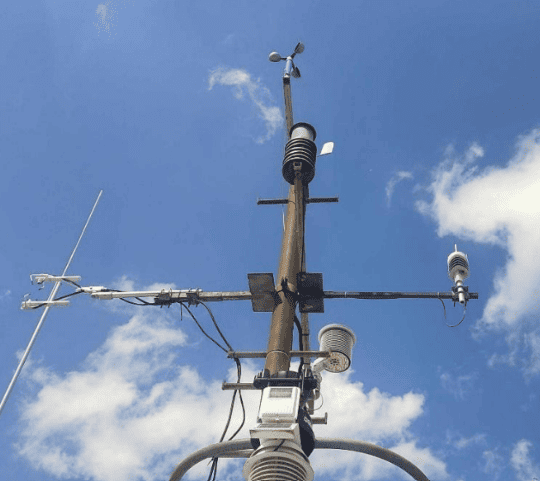Precipitation has several potential sources of impact, arising from radome wetting (both cloud radar and radiometer), scattering assumptions no longer applicable (microwave radiometer), and attenuation in the atmospheric column (cloud radar). Periods when the measurements are potentially affected by precipitation can usually be determined from the measurements themselves. However, the addition of a rain-gauge provides the surface rain-rate which will aid identifying those periods where only radome wetting is an issue (weak precipitation), and periods where the precipitation is strong enough to cause serious attenuation of the radar reflectivity profile. For identifying radome wetting conditions, a fast response instrument sensitive to weak precipitation must be employed, such as optical sensors and disdrometers; a standard tipping bucket rain-gauge has very slow response times to weak precipitation (has to wait for the internal bucket to fill before tipping) and is not suited for this application. A tipping bucket rain-gauge may be more accurate in strong precipitation conditions and when calculating accumulations, which can then be used to check the performance of the disdrometer.
Temperature is an important parameter to identify the solid precipitation that can reach the ground. A temperature threshold will be applied to focus our study and comparison between disdrometers and cloud-radar only for liquid precipitations. Relative humidity will be used to identify periods without fog events in applying a threshold and to consider only precipitation events.
Wind speed can have a significant impact on the quality of disdrometer measurement during precipitation events: fall drop velocity can be modified by strong surface dynamics. Representative wind speed near the ground level is also necessary to optimise the monitoring of the cloud radar calibration constant with the disdrometer.

Weather Station procedures and methods
TITLE | VERSION | LINK TO DOCUMENT | RELATED PRESENTATION | RELATED PUBLICATION |
| Weather station Standard Operating Procedures | 2024 | Standard Operating Procedures |
